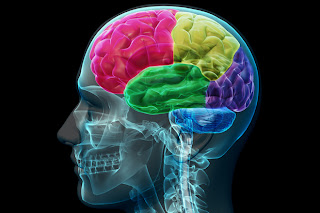Characteristics of the left and right hemisphere of the brain:
Left Hemisphere Style
Rational
- Responds to verbal instructions
- Problem solves by logically and sequentially looking at the parts of things
- Looks at differences
- Is planned and structured
- Prefers established, certain information
- Prefers talking and writing
- Prefers multiple choice tests
- Controls feelings
- Prefers ranked authority structures
Sequential
- Is a splitter: distinction important
- Is logical, sees cause and effect
Draws on previously accumulated, organized information
Right Hemisphere Style
Intuitive
- Responds to demonstrated instructions
- Problem solves with hunches, looking for patterns and configurations
- Looks at similarities
- Is fluid and spontaneous
- Prefers elusive, uncertain information
- Prefers drawing and manipulating objects
- Prefers open ended questions
- Free with feelings
- Prefers collegial authority structures
Simultaneous
- Is a lumper: connectedness important
- Is analogic, sees correspondences, resemblances
Draws on unbounded qualitative patterns that are not organized into sequences, but that cluster around images
What They Are, and Their Difference
Some may have heard of this, others may have not. Before we get too into specific examples to aid in our benefit, let’s go over exactly what the left and right brain are, and their associated characteristics.
 Our brain is divided into two halves, as most of us know: the left and right side. Each side processes information very differently than the other, and the biggest difference is the visual aspect.
Our brain is divided into two halves, as most of us know: the left and right side. Each side processes information very differently than the other, and the biggest difference is the visual aspect.
The right side of the brain looks at visual reference as a whole, whether it be a landscape, object, or piece of artwork, and then works its way into noticing finer details.
The left side on the other hand, first sees the details and puts them together to form the bigger picture.
Our brains use both of these sides, mixing and matching each side’s abilities for a fully-functional human brain. However, each of us has a dominant side that leans more towards the behaviors of that respected side.
Their Relation to Art, Design, and Creativity
As one may have probably already guessed, those with dominance in the right brain may be more naturally creative.
It’s easy to assume this because for one, right-brained thinkers are less common than left, so it seems as though one would be seeing the world differently from everyone else.
Also, the natural heightened visual nature and curiosity tend to make the mind never stop thinking of the alternative — as well as how it can be applied visually.
Those with a dominant left brain are far more common, and far more analytical. They may feel at disadvantage for not having that ‘natural’ creativity. Realistically, though, left-brained people can be just as creative; they just come about it in a different way.
To better understand the artistic nature of both sides, let’s take a look at a few examples of artwork.
Benefit Your Work
Let’s now look into some further ideas of how we can specifically better our work by understanding our own psychology.
After taking the tests above, you may have found out that we are not either 100% right brained, or 100% left brained. We are a mix of them both, while some traits may lean far to the opposite side, and other may not.
Also, in certain traits, we may only be a certain percentage right/left brained, while the remainder of the percentage leads the opposite way.
We each have such unique characteristics, and an in-depth analysis of each (second test listed above) can help.



